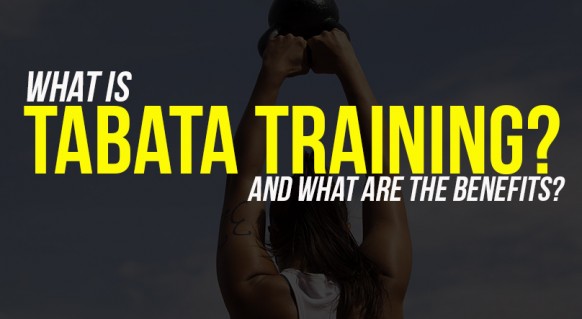By William Imbo
Tabata training is a hugely popular form of high-intensity interval training (HIIT) that is utilized in multiple fitness and sport-specific training methodologies. If you haven’t come across it yet in CrossFit, I assure you that you will. Soon.
“So what exactly is Tabata and why is it called that?” I hear you ask. Well, the story starts with the Japanese Olympic Speed Skating Team. In 1996 team trainer and scientist Izumi Tabataconducted a study analyzing the effectiveness of a specific HIIT program that the head coach had developed for his athletes. The team was split into different groups. The first group trained on ergonomic cycles at moderate intensity for one hour, five days per week, for a total of six weeks. The second group completed four-minute, high-intensity workouts on ergonomic cycles four days per week for a total of six weeks. The program that group two followed is what has come to be known as Tabata training:
Eight rounds
One round: 20 seconds of ‘all-out’ work, followed by 10 seconds of rest
Tabata describes the desired intensity of work at around 170% of an athlete’s VO2 max—their maximum rate of oxygen consumption. At the conclusion of the six weeks of training, Tabata found that group two had experienced a 28% increase in their anaerobic capacity, as well as a 14% increase in their VO2 max. When summarizing the effect of the study and the HIIT program, Tabata writes that “moderate-intensity aerobic training that improves the maximal aerobic power does not change anaerobic capacity and that adequate high-intensity intermittent training may improve both anaerobic and aerobic energy supplying systems significantly, probably through imposing intensive stimuli on both systems”.
If Tabata is good enough to produce those kind of results on Olympians, I think we can agree that we all stand to benefit from utilizing this type of training more often. Though he didn’t actually design the workout itself, Izumi Tabata, now a professor and researcher at Japan’s Ritsumeikan University, knew that this type of training would appeal to other types of athletes.
“Originally I thought this type of training was just for speed skaters or other highly motivated athletes because it is very painful and tiring. However, I found that there were groups of people interested in building muscle and therefore doing short high-intensity exercises that trained their muscle, but not those exercises that improved their aerobic training. When this regimen came along, they began to realize they could train both at the same time”
Interestingly enough (though perhaps not that surprisingly), Tabata was not the first use of HIIT. Peter Coe used the technique to train his son Sebastian in the seventies—he would go on to win four Olympic medals in middle-distance running. Indeed, HIIT is a training methodology that has long been experimented with and shown to be effective in numerous ways. For example, a study in the January 2002 edition of Sports Medicine declared, “It seems that, for athletes who are already trained, improvements in endurance performance can be achieved only through high-intensity interval training”. In 2005 the American Journal of Cardiology published a study that revealed that HIIT assisted in the rehabilitation of patients with coronary heart disease. There are countless other studies that laud the benefits of incorporating HIIT for athletic performance, aiding in dealing with various maladies and for general fitness.
Though the original Tabata study was done on a bicycle, the flexibility of the workout format means that various movements can be incorporated—from plyometrics to resistance training—which has made it so attractive to CrossFit coaches and athletes everywhere. With a Tabata sequence being four minutes in total, a coach can easily utilize three different stations—say rowing, burpees and wall balls—to get a quite monstrous 12-minute workout. Tabata will immediately increase your heart rate and metabolism, as well as your levels of anaerobic and aerobic endurance—not to mention your lactic threshold and tolerance for PAIN.
Of course, this all depends on the work level that the athlete is willing to put in—or rather, is capable of—and in this regard Tabata has come under scrutiny for not being suitable for all levels of athletes—a statement that CrossFit tries to adhere to. A recent article posted on the American Council on Exercise’s website examined the benefits and potential risks of Tabata. Within, Talisa Emberts, M.S., a member of the research team from Clinical Exercise Physiology Program at the University of Wisconsin states that the intensity of Tabata training means that it may not be beneficial for someone who is not already in decent shape.
“It could be potentially dangerous for them to be working this hard,” he says. “Before people even attempt Tabata they probably need to have a pretty decent baseline level of fitness.”
As such, Emberts recommends only doing Tabata-style workouts two to three times a week with 48 to 72 hours rest between each session.
Whilst this is sound advice, the constantly varied nature of CrossFit means that the average athlete would not be seeing Tabata workouts that often—perhaps even only once a week or month. Therefore, all athletes should have enough time to build their fitness up to a level where they feel confident enough to push themselves to their limits with the workout, without incurring any injuries or other problems. And while others have complained that Tabata can be monotonous, thankfully CrossFit has a repertoire of movements that can be swapped in and out to allow us to be constantly ‘entertained’—and reap all the benefits that Izumi Tabata discovered with the Japanese speed-skating team.

Комментариев нет:
Отправить комментарий